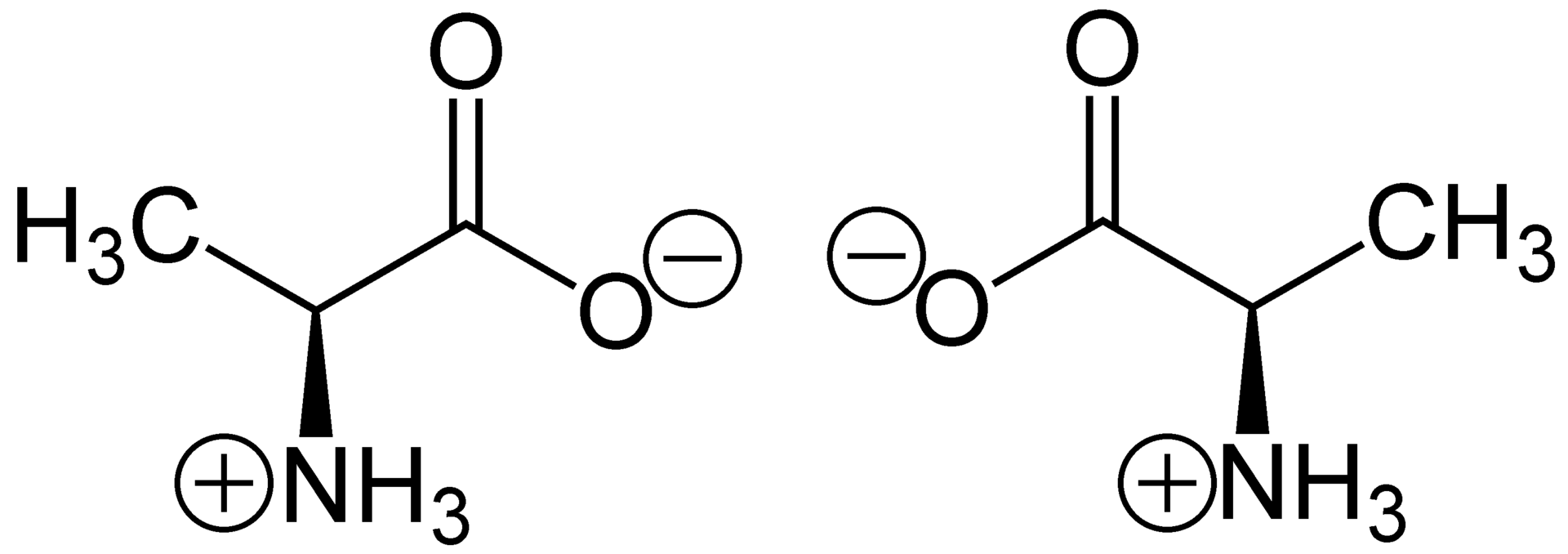by Chaoran Cheng
Nov 28, 2023
In this repo, I explore the expressive power of current geometric GNNs for enantiomer differentiation. An enantiomer one of two stereoisomers that are non-superposable onto their own mirror image. In other words, enantiomers are chiral molecules that are mirror images of each other.

Alanine, a chiral molecule. Left: L-alanine or (S)-alanine, right: D-alanine or (R)-alanine.
I followed this paper to construct an enantiomer conformation dataset for alanine. The original L-alanine trajectory were mirrored to simulate the enantiomer (D-alanine) behavior and water molecules were removed. A 90%/10% train/test split was assigned for both L-alanine and D-alanine, leading to a dataset of 18000 training samples and 2000 testing samples. See data_process.py for more details. The processed data is also provided under the data folder.
All codes are run with Python 3.9.15 and CUDA 11.6. The required packages are listed in requirements.txt.
To train a model, run the following command:
python configs/pointgcn.yml --savename pointgcn Different config files are provided under the configs folder. Most hyperparameters are self-explanatory. Feel free to modify them to suit your needs.
Below is the test accuracy for different GNN models. All model experiments were repeated 5 times (with the random seed set to null).
| Model | PointeNet | SchNet | DimeNet | DimeNet++ | TFN, SE(3) | TFN, E(3) |
|---|---|---|---|---|---|---|
| Accuracy (%) | 50.0±0.0 | 50.0±0.0 | 50.0±0.0 | 50.0±0.0 | 50.0±0.0 | 100.0±0.0 |